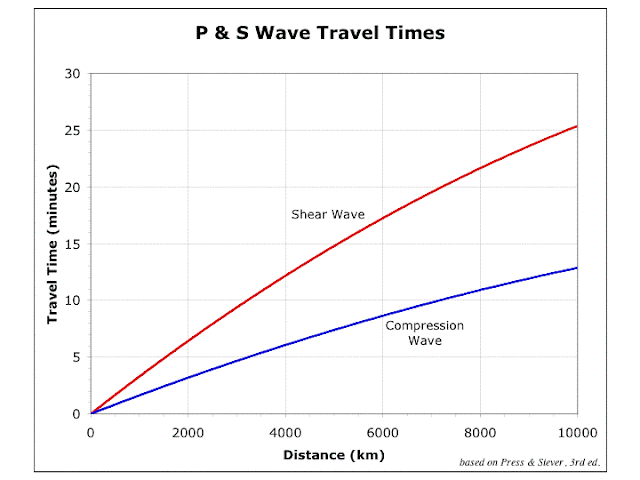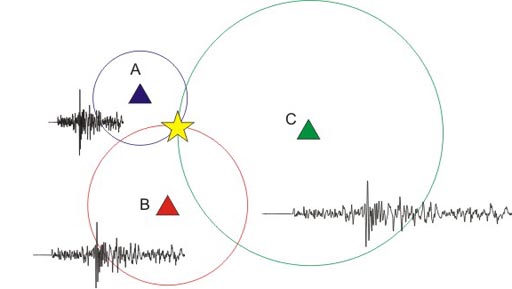Let's find out how scientist learn about epicenter of earthquake..
Reasons and Method:
To find the epicenter of earthquakes, scientists measure the interval between two types of waves called P-Wave and S-Wave. (P = Primary; S = Secondary). Both waves are seismic and move in the same direction during an earthquake, but their velocities are not the same.
Due to the contraction and expansion, the P-Wave travels at an average speed of 4.5 kilometers/second at 6 km depth in the earth's crust.
While the speed of the S-Wave is 2.8 km per hour. As a result, the distance between the two waves increases as more time passes after an earthquake. (See picture below)

Assuming that the observatories with seismo-meters are located slightly apart from each other in the surrounding geographical area. It is obvious that everyone receives P-Wave and S-Wave at different times from each other.
It is not difficult to calculate the location of the epicenter of an earthquake by measuring the time of their arrival when the speed of the waves is known.
The three observatories A, B, and C determine the geographical distance of the epicenter based on the time difference between the initial P-Wave and the arrival of its successor S-Wave. This is nothing more than a simple calculation.
Each observatory knows only the distance of the epicenter through the calculation. Not the direction. But it is also not difficult to determine.
The epicenter of the earthquake is where the circles were drawn by the experts of the three observatories intersecting each other (see the picture below, the star represents the epicenter).

It is also not difficult to know the depth. As the greater the depth, the faster both types of waves travel at a certain rate. At a depth of 1000 km, the speed of the P-Wave is 10.2 km/second.
While the speed of the S-Wave is 5.7 km. Experts are like seismic detectives in that way, but it is not possible for them to predict earthquakes.

Post A Comment:
0 comments so far,add yours
Please do not add any spam link in the comment box